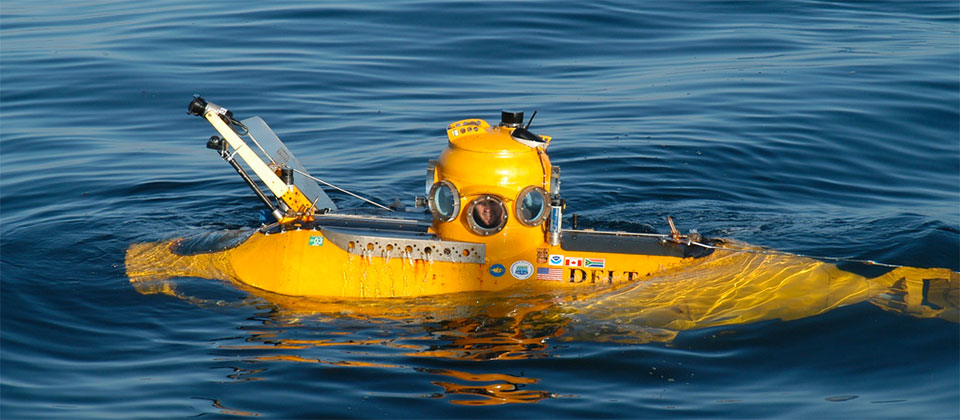Research and Monitoring

Research and monitoring allow us to understand the ecosystem through the scientific process and observe it over time to detect changes. Many projects have elements of both research and monitoring.
Research projects include hypothesis-driven process studies and modeling. Scientists conduct research to better understand the ecosystem and how it functions within the sanctuary. Scientists will also create models to represent ecosystems, evaluate contributions of different components, and predict responses under various scenarios.
Monitoring projects focus on the status and condition of marine life and habitats to detect trends within the sanctuary. Measuring current conditions against long term data sets can tell us how ecosystems change over time, in response to restoration efforts, or in response to stressors such as invasive species, habitat alteration, climate change, or ocean acidification.
Projects listed below are some of our current, high-priority projects:
- ACCESS
- Hypoxia Monitoring
- Coral Modeling
You can also visit the Sanctuary Integrated Monitoring Network (SIMoN) to learn about research and monitoring projects within Cordell Bank, Greater Farallones, and Monterey Bay national marine sanctuaries.

ACCESS
Applied California Current Ecosystem Studies (ACCESS) is a partnership project that conducts integrated multi-disciplinary studies on the distribution, abundance and demography of marine wildlife in the context of underlying physical oceanographic processes to inform managers about changes in ocean conditions and human threats.
ACCESS surveys the pelagic habitat in Federal and State waters of northern and central California, encompassing portions of three national marine sanctuaries (Cordell Bank, Greater Farallones and Monterey Bay). Since 2004, three to four cruises are conducted annually between April and October to collect data on biological and physical parameters during the beginning, middle, and post-upwelling seasons.
ACCESS performs both oceanographic and biological sampling, including: seabird, marine mammal, turtle, and marine debris abundance and distribution; ship traffic; acoustic and net sampling of zooplankton; water column characterization; nutrients; ocean acidification research and monitoring; and harmful algal bloom sampling.
Our primary partners are Point Blue Conservation Science and Greater Farallones National Marine Sanctuary. Other partners include: Greater Farallones Association, San Francisco Bay National Wildlife Refuge Complex, University of California Davis – Bodega Marine Lab, Hawai’i Pacific University, Pomona College, Sonoma State University, and San Francisco State University – Romberg Tiburon Lab, and the California Department of Public Health.
Photos, videos, annual summaries, and annual reports can be found on the ACCESS website. During research cruises ACCESS posts images and videos of daily events and findings. Follow ACCESS on Facebook.
Hypoxia Monitoring at Cordell Bank
Low oxygen water naturally occurs in the deep ocean but shallow intrusions of hypoxic (meaning “low oxygen”) water have been found in more shallow waters along the US west coast in recent years. Low dissolved oxygen levels were detected nearshore along the north central California coast for the first time in 2013 by Bodega Marine Lab researchers. Since 2014, CBNMS and BML have worked together to place sensors at Cordell Bank to monitor oxygen conditions at the bank. The bank is inhabited by a vibrant invertebrate and rockfish community which could be vulnerable to hypoxic conditions. Results from 2014-2016 showed that hypoxic or near-hypoxic conditions were recorded at times at the buoys but more research is needed to understand the extent and magnitude of the low oxygen conditions, and how they might affect the animals that live on the bank. See a summary report of hypoxia project in CBNMS.
Deep Sea Coral Habitat Modeling
The Cordell Bank National Marine Sanctuary staff has analyzed observational data collected with the Delta submersible on Cordell Bank by relating hydrocoral (Stylaster spp.) and gorgonian coral (Swiftia spp.) presence to various seafloor features, as measured by multibeam acoustic sampling. These results provide important information for understanding fine-scale habitat associations of deep sea corals and provide the foundation for monitoring these communities. In addition, these habitat models aid in our ability to make informed management decisions regarding these sensitive and diverse communities within a national marine sanctuary. Subsequent surveys from the bank will allow us to groundtruth and refine the model.
Benthic Research and Monitoring Planning
CBNMS scientists have produced a report summarizing a 2016 workshop that was held to develop strategies for benthic sampling in the sanctuary. Building on the history of research and monitoring in the sanctuary since the 1970’s, CBNMS is now developing a long term benthic monitoring plan to systematically characterize the bank and detect changes over time to inform management efforts. The workshop was held to receive advice on a variety of topics such as survey scheme and design, transect type and placement, analysis, and operations, to most effectively sample this ecosystem. Research staff at the sanctuary will develop a long term benthic monitoring plan based on the input received.

